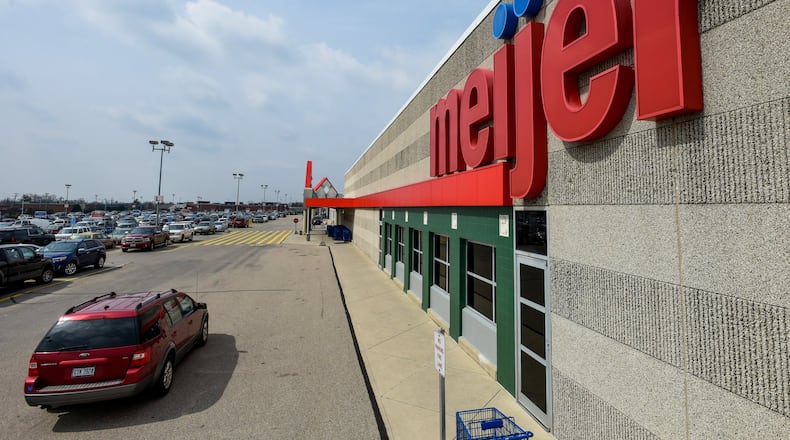“This settlement is different from the previous federal settlements that were litigated or the OneOhio in that it’s settled directly with Meijer,” she said. “It’s based on market share of opioids in Butler County.”
In addition to this new settlement, the county has received a total of $752,920 in opioid settlement money. The county received the first $232,669 installment of OneOhio funds last summer and a second payment of $244,523 this year from the agreement with some drug distributors. Officials say they should receive a total of $3.8 million to $5.4 million over 18 years, depending on a host of variables. Plus they have access to a share in $38.1 million to $54.4 million more, as part of regional group of seven counties that will decide future funding distributions.
In 2017, as attorney general, Gov. Mike DeWine was one of the first in the nation to sue opioid makers and drug distributors for their role in flooding the market with massive amounts of highly addictive opioids. The OneOhio program is part of the nationwide $26 billion settlement brokered by state attorneys general with the three largest opioid distributors Cardinal, McKesson and AmerisourceBergen
A settlement was also reached with Johnson & Johnson and Boyko said they have received a total of $275,728 — allocations for the first two years — and they are expecting a total of around $875,000 over the nine-year settlement payout period.
All told, unless other settlements are reached with a couple more opioid defendants, the county will have $4.8 million to $6.4 million over several years, not including the larger sums to be shared with the other counties in the regional group. Boyko said thus far the commissioners have not committed any of the opioid money.
“I’ve approached the board of commissioners on the need to perhaps more formally establish a local Butler County OneOhio committee,” she said. “So that there is a committee to advise them on relevant applications of the opioid funds.”
Nearly 4,000 jurisdictions nationwide filed lawsuits in state and federal courts years ago when the heroin epidemic was killing their residents, and budgets trying to deal with the pervasive problem. The commissioners sued 20 drug makers and distributors in federal court in 2017, they sought $5 million in that lawsuit. The county joined their case with a larger effort in federal court in what is known as multidistrict litigation (MDL), a tool used to consolidate similar actions and seek quicker resolutions.
The fact that the funds are coming in over time means it is unlikely huge projects can be funded with commissioners’ money. Chief Assistant Prosecutor Dan Ferguson has said the long pay-out period was by design and for the greater good.
“These are not lump sums that get dropped into anybody’s bank account, they’re time payments,” Ferguson said. “Part of the object of doing the time-payments, I think part of the courts’ object is they don’t really want to see these drug distributors run into bankruptcy, because frankly society needs many of the products they make and distribute.”
When the commissioners first filed their federal lawsuit, Commissioner Don Dixon told the Journal-News he hoped the money could make a long term difference, along the lines of the tobacco litigation of decades ago.
Given that the payout is over such a long period of time — and part of the massive litigation has been in bankruptcy court — Dixon said they must be circumspect when making funding decisions. He said “first we have to come up with plan for where it has the most impact” but also consider contingencies.
“It’s very hard to make a plan if you don’t have the money in hand, you can say well check’s in the mail, it might be, it might not,” Dixon said. “Whatever we use it for, however we schedule it to be used for whatever services, we’re going to have to be cognizant of the fact there is no guarantee ... We’ll move on the assumption the settlement will be coming, we have to plan accordingly so we don’t commit to something that four or five years from now we can’t do.”
Commissioner Cindy Carpenter is the commissioners’ appointee to the seven-county Region 14 group set up by the state to make decisions about how to spend the $38.1 million to $54.4 million pot of money. She said they have also set up a Butler County group to discuss what local projects should be recommended to Region 14.
“It is my hope my fellow commissioners utilize the local board to vet the projects for the commissioners also,” Carpenter said.
At this early juncture, one of her big priorities is to create more “recovery housing” which means places where recovering addicts live in a supportive environment conducive to staying clean. She said now they need to convince the various jurisdictions to support the effort.
“When you have 1,000 overdoses a year you have people using illegal drugs in your city so recovery housing is a better option,” Carpenter said. “Putting people in recovery is a better option. I think we’re starting to get people on the same page.”
Commissioner T.C. Rogers noted that the state and federal governments haven’t even formulated concrete plans for the best way to effectively spend billions of their dollars, but when he and his colleagues formulate their plans it will used “to support the various communities within the county for the greater good, we just haven’t come up with that yet.”
CONTINUING COVERAGE
Journal-News Staff Writer Denise Callahan has routinely covered the effects on Butler County of settlements from lawsuits filed against opioid makers and drug distributors for their role in flooding the market with massive amounts of highly addictive opioids.
About the Author

